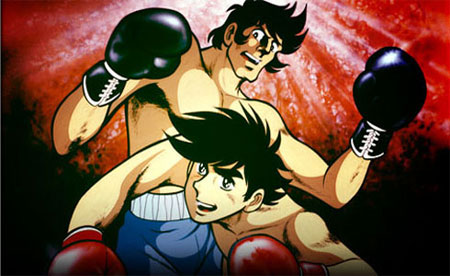Ask John: Is Niche Anime More or Less Likely to Reach America Now?

Question:
Seeing how more companies are starting to go towards doing more straight-to-boxset or sub-only releases, is it possible that more niche and vintage anime could have a better chance at getting licensed now? A number of the titles I want to see licensed are niche or vintage, so even if it’s sub-only or straight-to-boxset I’d be fully supportive of more niche and vintage anime coming over.
Answer:
I’m not the type of person that revels in being pessimistic, but I subscribe to the philosophy that it’s wiser to over-cautiously reinforce foundations than be blissfully ignorant while the walls are burning down. There’s no doubt that the domestic anime industry is attempting new distribution strategies. Media Blasters leads the distribution industry in subtitled only new releases. Viz and FUNimation are investigating premier boxed set releases. Bandai Entertainment has just announced a multiple release format distribution strategy. And titles including Death Note, Keitai Shoujo, Neko Ramen, Blassreiter, and Tower of Druaga have premiered in America online, subtitled. Whether this increasing focus on value priced subtitled releases and multi-disc sets bodes well for the possibility of more niche and vintage anime reaching America may depend largely on whether these new distribution strategies are an attempt to find viable alternate distribution methods, or a commercial necessity motivated by desperation. The former case may be positive for fans hoping for a bigger variety of anime, but evidence suggests that the later may be the true situation.
Consider that last fall Discotek Media canceled its plans for a domestic release of the Lupin III: Legend of Babylonian Gold movie. Last month Bandai Visual indefinitely delayed its domestic releases of the niche titles Shigofumi, True Tears, and Sola. There’s been no further word out of New Galaxy Anime since the company’s fall 2007 announcement of plans for a domestic DVD release of Unico. While they’re not strictly “niche” titles, Viz Media has ceased its continuing American DVD releases of the under-performing Mar, Hikaru no Go, Full Moon wo Sagashite, and Prince of Tennis series. ImagianAsian brought Cat’s Eye, Nobody’s Boy Remi, and Orguss to America but has not announced any new acquisitions, nor even any plans to finish the domestic release of Cat’s Eye.
The decreasing price of domestic anime is certainly beneficial to consumers. The shifting focus toward releasing new titles in multi-disc sets also satisfies American consumer demand. However, we may be seeing these strategies applied to fewer, higher profile titles. With anime DVD sales and releases continuing to decline (according to The DVD Release Report, first quarter domestic anime DVD releases this year are down by 15% compared to first quarter 2007), domestic anime licensors may be searching for ways to stay afloat by releasing only titles with strong market potential in very consumer friendly packages. In a tight market, niche and vintage anime titles are an exceptionally risky investment.
Present and forthcoming domestic anime release strategies seem especially well suited to packaging vintage and niche titles, but those vintage and niche titles will only be licensed and released if domestic licensors believe that they’re viable investments. To that ends, anime fans can influence what gets licensed and released. Have you purchased domestic releases including Tweeny Witches, Flag, and Ramen Fighter Miki? Have you purchased some or all of the vintage anime released by DiscoTek and ImaginAsian? Have you preordered Yawara yet? (Before I’m accused of being hypocritical or elitist, my answer to all of these questions is, “Yes. I have.”) Supporting these and upcoming releases of vintage and niche anime like Champion Joe (Ashita no Joe), Maria-sama ga Miteru, Victorian Romance Emma, and GoLion encourages domestic distributors to acquire more similar anime.
Speaking as a fan that grew up watching and loving 70s and 80s anime, and as a fan that now has a taste for a wide variety of anime, I’m especially interested in seeing older and obscure titles brought to America. New and innovative domestic distribution practices do seem especially well suited to efficiently delivering such anime to American consumers, but right now I don’t see encouraging evidence that domestic distributors are eager to release niche market anime, or that the American consumer market is willing to support the official distribution of titles with small market appeal. The positive side of this observation is the fact that individual American anime fans can affect this situation if they’re willing to do so.


